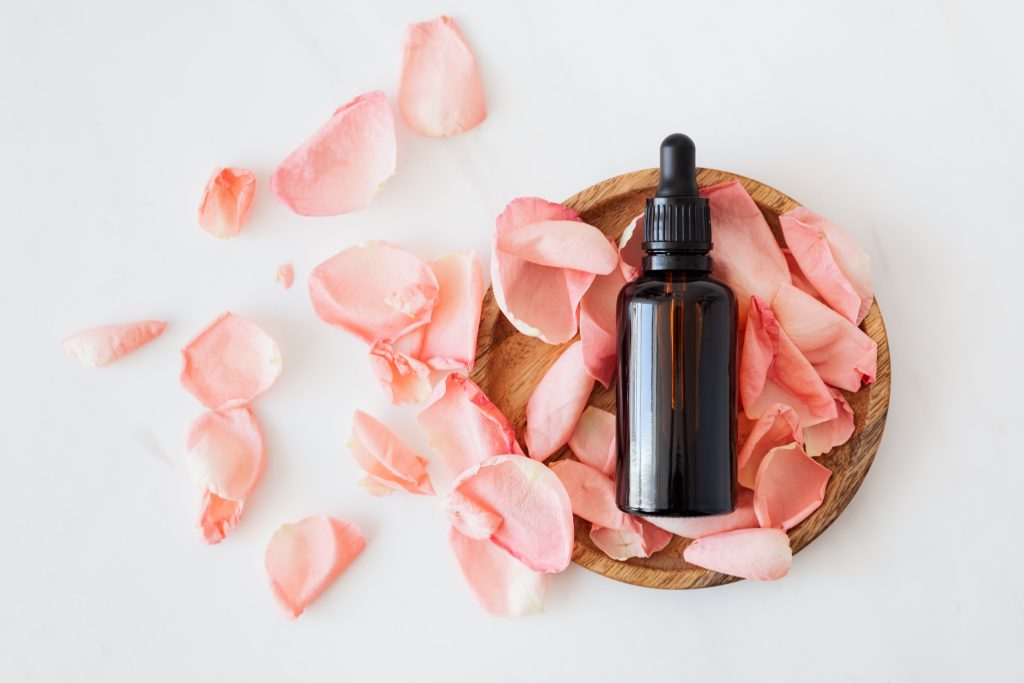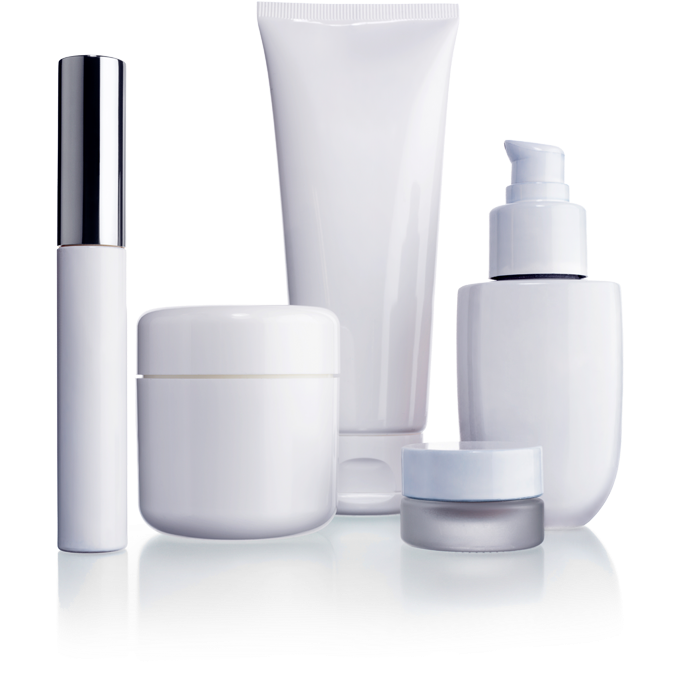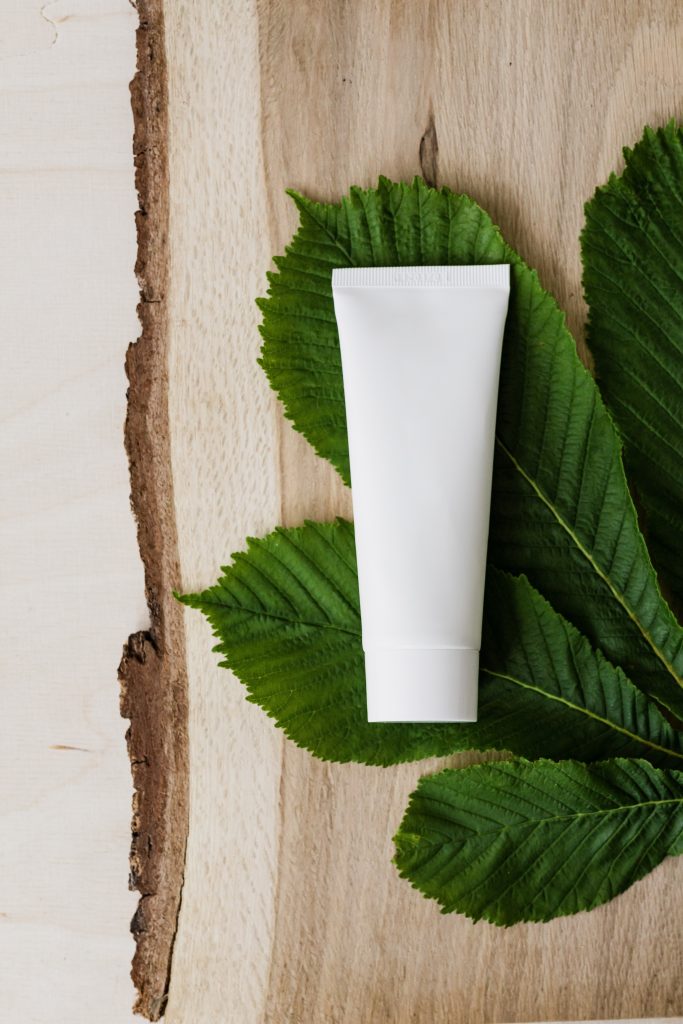How To Start A Skincare Brand – The All In One Guide
Are you looking to start a skincare line? In this guide we will explore how to do just that! Exploring driving factors such as the demand for natural and sustainable products and how you can strive towards making that a reality. We will also deep dive into the benefits of starting your own skincare business and the challenges you will face along the way.
Table Of Contents
- Introduction
- Research The Market
- Develop A Business Plan
- Decide On A Legal Structure
- Create Your Product Line
- Manufacturing & Shipping
- Creating Your Formulation
- Build Your Brand
- Launch And Grow Your Business
- Marketing
- Conclusion
Why Skincare?
Skincare products play a crucial role in maintaining healthy skin and reducing/preventing premature aging. These sought after benefits are achieved through improving the overall appearance and texture of the skin.
- Skin Cleansers
- Moisturizers
- Exfoliators
Within your skincare line this is the trinity of products that are needed to create an effective skincare routine for your customers. You can also have addon products such as creams, lotions, serums and masks to help enhance the effects of your main line products; while also providing additional benefits such as hydration, brightening and firming that may be missing from your main line products.
In recent years, there has been a growing trend towards natural, organic, and sustainable skincare products! Consumers are becoming more aware of potential issues that may arise when using synthetic chemicals and additives commonly found in traditional skincare products. Skincare customers are also increasingly interested in eco-friendly and ethical practices, such as using recyclable packaging and supporting fair trade. Due to this spike in interest it would be best to attempt to research where your products are coming from and how they might support fair trade.
This shift in consumer preferences has created a vast market for natural and sustainable skincare products, these new opportunities allow for small businesses to have a better chance of injecting themselves into the market and being successful. By starting a skincare business, you can tap into this growing demand and create a brand that resonates with consumers looking for high-quality, natural products that meet their skincare needs.
However, starting a skincare business is not without its challenges. It requires careful planning, market research, and product development, as well as marketing and distribution strategies that can effectively reach your target audience! With the right mindset, and resources, you can build a successful skincare business that brings value to your customers and allows you to dive into an industry you are passionate about! If you are looking to launch a skincare line click here to see how we can help!

Researching the skincare market.
In this section, we shall dive deeper into the intricacies of the skincare market and explore the different product categories, leading brands, and consumer segments that you could potentially target. We shall also demystify the recent trends and innovations that are driving the market.
The skincare market is vast, valued at over $180 billion globally, and encompasses a plethora of products such as facial care, body care, hair care, and sun care. Each category has unique consumer needs that require customized product formulations and marketing strategies.
The market is fiercely competitive, with numerous established and emerging brands jostling for market share. Some of the prominent players in the industry include L’Oreal, Unilever, Estée Lauder, and Procter & Gamble. These brands have substantial resources and expertise, making it arduous for new players to enter the market.
However, despite the challenges, there are plenty of opportunities to carve out a niche in the skincare market. By identifying and targeting specific consumer segments, such as those seeking natural, organic, or vegan products, you can differentiate your brand and build a loyal customer base.
To succeed in the skincare market, you must stay on top of the latest trends and innovations. For instance, many consumers are keen on multi-functional skincare products that offer various benefits such as anti-aging, hydration, and sun protection. Other trends include the use of probiotics and microbiome-friendly ingredients and personalized skincare formulations based on individual skin types and needs.
By keeping pace with these trends and leveraging them to create innovative products and marketing strategies, you can differentiate your brand and gain a competitive edge in the market. In the next section, we shall delve into the step-by-step process of launching a skincare business and discuss how you can use these insights to build a successful brand.
If you’re looking to dive into the intricacies of the skincare market and uncover opportunities and challenges that could impact the growth of your skincare business, a multifaceted approach to research is essential! After all, the skincare market is vast, encompassing numerous brands, products, and consumers with diverse preferences and needs. So, how can you get a comprehensive understanding of your target audience’s skincare requirements, preferences, and the latest market trends to ensure your success? Well, here are some specific research strategies that you can employ!
Research Strategies
Analyze the market
Have you considered using various tools such as surveys, focus groups, and online analytics to gather data on consumer behavior, preferences, and needs? By analyzing patterns and trends in consumer spending and product demand, you can identify potential opportunities and gaps in the market that your business can capitalize on.
Studying competitors
Are you aware that conducting research on leading brands in the skincare market can provide valuable insights into their product offerings, pricing strategies, marketing tactics, and consumer base?! This can enable you to identify gaps in the market and potential areas for differentiation, thereby positioning your brand strategically for success!
Exploring industry publications and reports
Did you know that staying on top of the latest trends and innovations in the skincare industry by reading trade publications and reports is essential? These sources can provide valuable insights into the latest product formulations, market trends, and consumer behavior that can inform your business strategy!
Attending trade shows and conferences
Have you thought about participating in industry events such as trade shows and conferences? This can enable you to network with industry experts, learn about the latest product offerings, and gain insights into emerging trends and technologies in the skincare market!
Leveraging social media
Do you realize that monitoring social media platforms such as Instagram, Facebook, and Twitter is crucial to staying up-to-date on the latest skincare trends and consumer preferences?! It can also be used to engage with potential customers and gather feedback on your product offerings!
Using a keyword research strategy
This is an SEO based approach but allows you to find out exactly what customers are looking for in your niche and also allows you to know where there is less competition within your niche.
By utilizing these research strategies, you can obtain a more in-depth understanding of the skincare market, identify potential opportunities and challenges, and develop effective marketing and product strategies to build a successful skincare business! So, what are you waiting for? Start researching today and take your business to the next level!

Developing a business plan.
Are you ready to dive into the exciting world of skincare entrepreneurship? Developing a business plan may seem daunting at first, but with the right approach, you can create a roadmap for success.
Define your business.
First, define your mission, vision, and values. What sets your skincare business apart? Are you focused on sustainability, natural ingredients, or a specific skincare concern? Make sure your mission aligns with your values and resonates with your target customers.
Create achievable goals and objectives.
Next, set specific goals and objectives for your business. These could include launching your product line within a certain timeframe, reaching a certain number of sales within the first year, or expanding your distribution channels. Make sure your goals are measurable and achievable.
Get down to the wire and outline the specifics.
Outline your products and services, including details on formulations, packaging, and pricing. Conduct thorough research to ensure that your products meet the needs of your target customers and are competitive within the market.
Define your marketing & sales strategies.
Creating a marketing and sales strategy is crucial for reaching and engaging potential customers. Consider utilizing social media platforms, influencer partnerships, and email marketing to promote your products. Don’t forget to factor in your budget for advertising and sales efforts.
Figure out finances.
Estimating your financial needs and projections is a crucial aspect of any business plan. Determine your startup costs, ongoing expenses, and projected revenue streams. Consider seeking advice from a financial expert to ensure your projections are accurate.
Legal Considerations
Remember that starting a skincare business involves legal considerations as well. Decide on a legal structure, obtain necessary permits and licenses, and register your business with the state and federal government. It’s also important to protect your brand with trademarks and copyrights.
Developing a comprehensive business plan may take time and effort, but it is a crucial step towards success in the competitive skincare industry. Stay focused on your mission and values, conduct thorough research, and stay adaptable to changes in the market. Good luck on your skincare entrepreneurship journey!

Choose a legal structure and register your business
Starting a skincare business requires careful consideration of legal structure and registration. Choosing the right legal structure is crucial as it determines how the business will be taxed, what paperwork needs to be filed, and how much personal liability the owner will have. With so many options available, it can be overwhelming to choose the right one.
Sole proprietorship is the simplest form of legal structure, but it offers little protection from personal liability. On the other hand, forming a limited liability company (LLC) or corporation offers greater protection for personal assets and can provide tax benefits. However, setting up an LLC or corporation requires more paperwork and may come with higher costs.
Registering a business involves obtaining necessary permits and licenses and registering with the state and federal government. Each state has its own set of regulations and requirements for registering a business, so it’s important to do thorough research to ensure compliance.
Protecting the brand is also an essential part of legal considerations. Trademarks and copyrights can protect a skincare business’s name, logo, and products from infringement. Obtaining these protections can be complex and requires working with legal professionals, adding to the overall cost of starting a business.
Navigating the legal aspects of starting a skincare business can be a challenging and perplexing process. It’s important to consult with legal professionals to ensure that all legal requirements are met and the business is properly registered and protected.

Create Your Product Line
Creating a product line for your skincare business is a critical step in starting and growing your business. Here are the steps you should follow to create a successful product line:
Determine your product line based on research and market demand
Before you start creating your products, you need to research and understand your target audience’s skincare needs and preferences. Conduct surveys and focus groups to gather information on what your potential customers want in their skincare products. Analyze your competitors’ product lines to see what they offer, and determine what gaps or niches in the market you can fill. Use this information to create a product line that meets your customers’ needs and stands out from the competition. Learn more about creating your product line here.
Develop formulations and packaging
Once you have a clear understanding of your target audience’s needs, you can start developing formulations for your products. Work with a cosmetic chemist or formulator to develop safe and effective formulations that use high-quality, natural ingredients. Your formulations should be unique and meet your customers’ specific needs, such as reducing wrinkles, improving skin texture, or moisturizing dry skin.
In addition to the formulation, you need to consider the packaging for your products. Your packaging should be functional, attractive, and environmentally friendly. Consider using recyclable or biodegradable materials for your packaging to appeal to environmentally conscious consumers.
Test and refine your products
Before launching your product line, you need to test your formulations on a small scale to ensure their safety and effectiveness. Conduct small-scale clinical trials or focus groups to get feedback from potential customers. Use this feedback to refine your formulations and make any necessary changes.
Determine pricing and margins
Pricing is a crucial factor in determining the success of your product line. You need to set prices that are competitive but still allow you to make a profit. Consider the cost of ingredients, packaging, and manufacturing when setting your prices. You should also consider the price points of your competitors’ products.
Create product labels and marketing materials
Your product labels and marketing materials should be informative, visually appealing, and compliant with industry regulations. Include a list of ingredients, directions for use, and any potential warnings on your product labels. Your marketing materials should clearly communicate the benefits of your products and target your audience effectively.
Choose a manufacturer for your products
You can either manufacture your products yourself or work with a private label manufacturer. If you choose to work with a private label manufacturer, research and choose a reputable one that can create high-quality formulations and packaging that align with your brand’s values.
Decide on shipping
Deciding on whether to do your own shipping or work with a shipping center is a critical decision that can impact your business’s success. Doing your own shipping can save you money, but it requires significant time and resources. Working with a shipping center can be more expensive, but it allows you to focus on other aspects of your business, such as product development and marketing.
In conclusion, creating a product line for your skincare business requires careful planning and execution. By following these steps, you can develop a product line that meets your customers’ needs, stands out from the competition, and helps grow your business.

Finding a manufacturer and deciding on how to ship
Let’s delve deeper into finding a manufacturer that offers private labeling services, as well as the pros and cons of doing your own shipping versus working with a shipping center.
Finding a manufacturer
When it comes to finding a manufacturer that offers private labeling, it’s important to do your research and find a reputable company with a proven track record of producing high-quality products. Look for a manufacturer that specializes in skincare and has experience creating products similar to what you have in mind. You can start by searching online, attending trade shows, and networking with other skincare professionals to get recommendations.
Once you’ve found a manufacturer that you’re interested in working with, be sure to ask them about their private labeling services. Some manufacturers may only offer standard labeling options, while others may allow you to fully customize the labels with your brand name, logo, and product information. Consider the level of customization you require and make sure that the manufacturer can meet your needs.
Shipping
When it comes to shipping, there are a few options to consider. If you’re just starting out and have a small number of orders, you may be able to handle shipping on your own. This can save you money on fees associated with working with a shipping center, but it also requires a significant amount of time and effort on your part. You’ll need to purchase shipping materials, pack and ship orders, and handle any returns or exchanges.
On the other hand, working with a shipping center can be a great option if you’re scaling up your business or simply don’t have the time or resources to handle shipping on your own. A shipping center will handle all aspects of shipping and handling, including inventory management, order processing, packing, and shipping. This can free up your time to focus on other aspects of your business, such as marketing and product development. However, it’s important to note that working with a shipping center can be more expensive than handling shipping on your own, so you’ll need to weigh the costs and benefits carefully. Read our detailed guide on shipping skincare products here.
Ultimately, the decision of whether to handle shipping on your own or work with a shipping center will depend on your individual needs and resources. Consider your budget, time constraints, and business goals when making this decision.

Creating Your Formulation
Formulating natural products can set you apart from competitors and appeal to customers looking for non-toxic options. However, it’s important to follow strict guidelines to ensure your products are safe and effective. Here is a guide to help you formulate your own natural skincare products, including a cleanser, a scrub, and a moisturizer.
- Understand Your Target Market
Before formulating any skincare product, it’s important to understand your target market. Consider factors like skin type, age range, and skin concerns to determine the best ingredients and formulations for your customers. - Choose Natural and Safe Ingredients
When formulating natural skincare products, it’s important to choose high-quality, natural ingredients that are safe for use. Look for plant-based oils, butters, and extracts that provide beneficial properties for the skin without harsh chemicals. - Formulate a Cleanser
Cleansers are essential for removing dirt and impurities from the skin. To formulate a natural cleanser, start with a gentle surfactant like coco-glucoside or decyl glucoside. Add ingredients like aloe vera juice, chamomile extract, or green tea extract for soothing and anti-inflammatory benefits. pH balance is key, so use a pH meter to ensure the final product falls between 5.5 and 6.5. - Formulate a Scrub
Scrubs help to exfoliate and remove dead skin cells. To formulate a natural scrub, start with a gentle exfoliant like jojoba beads or sugar. Add moisturizing ingredients like shea butter, avocado oil, or coconut oil. Essential oils like lavender or peppermint can add a refreshing scent. - Formulate a Moisturizer
Moisturizers help to hydrate and protect the skin. To formulate a natural moisturizer, start with a light oil like jojoba or argan oil. Add humectants like glycerin or hyaluronic acid to attract moisture to the skin. Add a natural preservative like leucidal liquid to ensure the product remains fresh.
Here is a list of some ingredient categories and how you may want to utilize them when creating your skincare products.
The utilization of diverse ingredients in skin care products is crucial for attaining both efficacy and safety. Here, we will delve into the categories of ingredients that you need to think about, each
contributing in its unique way to benefit the skin.
Cleanser: Consists of ingredients such as Jojoba, Vitamin E, Coconut Oil. Cleansers are used to wash away impurities and bacteria that might lead to acne or other types of skin impurities.
Exfoliants: Such as coffee, sugar, salt and charcoal. They are used for removing dead skin cells and excess oil which can lead to brighter healthier looking skin.
Carrier oils: Such as sweet almond oil and avocado oil, dilute essential oils, making them safer for skin use, while providing hydration and nourishment.
Essential oils: Are highly concentrated plant extracts, offer a range of benefits, including hydration, relaxation, and improved skin tone. Some popular essential oils for skin care include lavender, tea tree, and peppermint. These will always be diluted in carrier oils and can be used to add fragrance and aromatherapy benefits to a skin care product. - Testing and Adjusting Formulations
Testing and adjusting formulations is crucial to ensure the final product is safe and effective. Conduct stability tests to ensure the product maintains its consistency and properties over time. Conduct patch tests on a small group of individuals to ensure the product does not cause irritation or adverse reactions. Here are some product ideas to help you get on the right path

Building a brand
Building a brand is a critical step in establishing a successful skincare business. Your brand is what sets you apart from competitors and creates a connection with your customers. Here are some tips to build a brand that will stand out in the crowded skincare market:
- Develop a brand identity and logo: Your brand identity includes your brand name, logo, colors, and overall style. Your logo should be eye-catching and memorable, and your brand style should be consistent across all marketing materials.
- Create a website and social media presence: In today’s digital age, having a strong online presence is essential. Create a website that showcases your products and tells your brand story. Use social media platforms like Instagram, Facebook, and Twitter to engage with your audience and promote your brand.
- Establish partnerships and collaborations: Collaborating with influencers, other brands, and industry experts can help increase your brand’s visibility and credibility. Consider partnering with a reputable beauty blogger or influencer to promote your products.
- Build a loyal customer base: Building a loyal customer base takes time and effort. Provide excellent customer service, respond to customer inquiries promptly, and create a loyalty program to reward repeat customers.
- Offer a unique value proposition: Your brand should offer something unique that sets it apart from competitors. Maybe your products are all-natural or organic, or maybe they address specific skincare concerns that aren’t addressed by other products.
- Leverage packaging and labeling: Your packaging and labeling should be visually appealing and communicate your brand’s values and unique selling points. Consider eco-friendly packaging options to appeal to environmentally conscious customers.
By following these tips, you can build a strong brand that resonates with customers and helps your business stand out in the competitive skincare market.

Launch your business and grow
Congratulations on reaching this stage of starting your skincare business! Now that you have developed your product line and built your brand, it’s time to launch and grow your business.
Launching your business requires a solid marketing strategy to attract and retain customers. This involves getting your products in front of your target audience and building a strong customer base. There are several ways to do this, including social media advertising, influencer marketing, email marketing, and content marketing.
Social media advertising involves using social media platforms such as Instagram, Facebook, and Twitter to advertise your products. You can use sponsored posts or ads to reach a wider audience and target specific demographics based on interests, location, and other factors.
Influencer marketing involves partnering with influencers in the skincare industry to promote your products. These influencers have large followings on social media and can help increase brand awareness and credibility.
Email marketing involves sending newsletters and promotional emails to your customer base to keep them engaged and informed about new products, sales, and promotions.
Content marketing involves creating valuable content such as blog posts, videos, and social media posts that educate and inform your audience about skincare and related topics. This helps establish your brand as an authority in the industry and can attract new customers.
In addition to marketing, it’s important to monitor and adjust your strategies as needed to ensure continued growth and success. This involves tracking sales and customer feedback, analyzing market trends, and staying up-to-date on industry regulations.
As your business grows, you may also want to consider expanding your product line and distribution channels. This can involve introducing new products or partnering with other retailers to reach a wider audience.
Seeking funding or investors can also be a viable option for growth opportunities. This can involve pitching your business to investors or applying for small business loans.
Remember, the key to launching and growing your business is to stay focused, adaptable, and passionate about your products and brand. With hard work and dedication, you can achieve success in the competitive world of skincare. We will go more in depth on marketing in the next section!

Marketing
In today’s digital world, marketing plays a vital role in the success of any business. In this blog, we will explore how to market a new skin care line using various digital marketing strategies such as SEO, content marketing, social media marketing, email marketing, PPC, and affiliate marketing.
SEO
SEO or Search Engine Optimization is the process of optimizing your website to rank higher in search engine results. When it comes to marketing a new skin care line, SEO can help you reach potential customers who are searching for skin care products online. Here are a few SEO tactics you can use:
Keyword Research: Research and identify keywords that your target audience is searching for. For example, “organic skincare,” “anti-aging creams,” “best skin care for sensitive skin,” etc.
On-Page Optimization
Optimize your website’s pages with the identified keywords, including the title tags, meta descriptions, and header tags. Ensure your website is mobile-friendly, loads quickly, and has relevant content.
Backlinks
Backlinks are links from other websites to your website. Google sees backlinks as a sign of authority and popularity. Therefore, it’s important to build backlinks from high-quality websites.
Content Marketing
Content marketing is a marketing technique that involves creating and sharing valuable content to attract and retain customers. Here are some content marketing strategies to promote your new skin care line:
Blogs: Create blog posts that offer skin care tips, product reviews, and industry news. This will help establish your brand as a trusted authority in the skincare industry and will also help with SEO.
Infographics: Use infographics to share information about the ingredients in your products and their benefits. This will help customers understand the science behind your products and why they are effective.
Videos: Create videos demonstrating how to use your products and showcasing their benefits. You can also create video testimonials from satisfied customers.
Social Media Marketing
Social media marketing is an essential component of any modern skincare brand’s marketing strategy. With more and more consumers turning to social media to research and purchase products, it’s essential for skincare brands to establish a strong presence on social media platforms. Here are some tips for creating successful social media campaigns for your skincare brand:
- Choose the Right Platforms
Not all social media platforms are created equal. Determine which platforms your target audience is most active on, and focus your efforts on those platforms. For example, if your target audience is primarily women in their 20s and 30s, Instagram and Pinterest may be more effective platforms to reach them than LinkedIn. - Establish a Consistent Brand Voice
Your brand voice should be consistent across all social media platforms. Determine the tone and style that best reflects your brand’s values and personality, and use it consistently in all your social media posts and interactions. - Create High-Quality Visual Content
Visual content is critical for skincare brands. Use high-quality images and videos to showcase your products, and create visually appealing content that will engage your audience. Consider working with influencers or partnering with photographers to create professional-quality visual content. - Engage with Your Audience Social media is a two-way conversation.
Engage with your audience by responding to comments and messages, and encourage them to share their experiences with your products. User-generated content is an excellent way to build trust and credibility with your audience. - Run Paid Advertising Campaigns
Social media platforms offer a range of paid advertising options, including sponsored posts, promoted tweets, and influencer marketing. Consider running paid campaigns to reach a larger audience and promote your products to potential customers. - Analyze Your Results
Regularly analyze your social media campaigns to determine what’s working and what’s not. Use analytics tools to track engagement, conversions, and other key metrics, and adjust your strategy accordingly.
Email Marketing
The key to a successful beauty brand email marketing campaign is setting clear and actionable goals. Before creating your email messages, it’s important to identify what you want to achieve.
For your beauty email marketing strategy, you should start by asking yourself the following questions:
- What is the purpose of my email campaigns? Is it to promote a new product launch, drive sales, or build brand awareness?
- Who is my target audience? Are you targeting existing customers or trying to reach a new demographic?
- Where are my subscribers interacting with my emails? Are they opening your emails on desktop or mobile devices? Which subject lines or calls to action are resonating with them?
- How will I track my performance? Will you use metrics such as open rates, click-through rates, or conversion rates to measure the success of your campaigns?
By answering these questions, you can create more targeted and effective messages that address your subscribers’ pain points. To ensure that your email goals are effective, you can use the SMART model, which stands for Specific, Measurable, Attainable, Relevant, and Time-bound. This will help you create goals that are specific, measurable, achievable, relevant to your business objectives, and time-bound, making it easier to track your progress and adjust your strategy as needed.
Some examples of email campaigns you can implement are as follows:
Welcome Series: Create a welcome series for new subscribers, introducing your brand and your products. Offer a discount code to encourage them to make a purchase.
Your welcome campaign is the foundation of your email marketing strategy, triggered as soon as your audience signs up for your newsletter. It’s essential to create a warm and inviting first impression through visually appealing and engaging content, including an irresistible incentive to keep subscribers interested.
Crafting an effective welcome email is crucial as it sets the tone for your subscribers’ opinion of your brand. Therefore, it’s crucial to create a campaign that checks all the right boxes to ensure your subscribers remain on your email list. A friendly tone, visually pleasing design, and an attractive incentive can go a long way in creating a positive first impression and building a long-term relationship with your subscribers.
Newsletters: Send newsletters regularly, sharing skin care tips, product updates, and exclusive discounts. This will keep your subscribers engaged and informed. Some examples of news letters are as follows.
- Product Recommendation emails
- Survey Emails
- Educational Emails
- Seasonal Emails
Abandoned Cart Emails: Send abandoned cart emails to customers who added products to their cart but did not complete the purchase. Offer a discount code to encourage them to complete their purchase.
PPC Advertising
PPC or Pay-per-click advertising is a form of digital advertising where you pay for each click on your ads. Here are a few PPC advertising strategies:
Pay-per-click (PPC) advertising on Google AdWords can be an effective way for skincare brands to increase their visibility, attract potential customers, and drive conversions. PPC advertising allows brands to bid on keywords related to their products or services, and then display targeted ads to potential customers who are searching for those keywords on Google.
Here are some tips for creating successful PPC campaigns for your skincare brand:
- Conduct Keyword Research
Keyword research is the foundation of any successful PPC campaign. By identifying the right keywords, you can ensure that your ads are displayed to the right audience. Use tools like Google Keyword Planner to identify relevant keywords and phrases that are commonly searched by your target audience. - Create Compelling Ad Copy
Your ad copy should be concise, engaging, and relevant to your target audience. Make sure your headline is attention-grabbing, and your description includes a clear call-to-action. Use ad extensions like site links, callouts, and reviews to make your ads more informative and attractive to potential customers. - Target the Right Audience
Google AdWords offers several targeting options, including location, device, language, and demographic targeting. Targeting the right audience ensures that your ads are displayed to potential customers who are most likely to convert. - Optimize Landing Pages
The landing page is where your potential customers will end up after clicking on your ad. Make sure your landing page is optimized for conversions by including a clear call-to-action, relevant information about your products or services, and an easy-to-use navigation. - Monitor and Adjust
Monitor your campaigns regularly to ensure they are performing well. Adjust your bids, ad copy, and targeting as needed to optimize performance and maximize conversions.
PPC advertising on Google AdWords can be a powerful tool for skincare brands to reach their target audience and drive conversions. By conducting keyword research, creating compelling ad copy, targeting the right audience, optimizing landing pages, and monitoring and adjusting campaigns, you can create successful PPC campaigns that generate leads and increase sales for your skincare brand.
Affiliate Marketing
Affiliate marketing is a marketing strategy where you partner with affiliates who promote your products in exchange for a commission. Here are a few affiliate marketing strategies:
Affiliate Program: Create an affiliate program where affiliates can sign up and promote your products. Offer them a commission for each sale they make.
Influencer Partnerships: Partner with influencers who are also affiliates. They can promote your products to their audience, earning a commission on each sale.
Coupon Code Partnerships: Partner with websites that offer coupon codes for online purchases. Offer them a commission for each sale that uses their coupon code.
Marketing a new skin care line requires a multi-faceted approach using various digital marketing strategies. By utilizing SEO, content marketing, social media marketing, email marketing, PPC, and affiliate marketing, you can reach your target audience, increase brand awareness, and drive sales. Remember to track your results and adjust your strategies as needed to achieve optimal results. With dedication, persistence, and a well-executed marketing plan, you can successfully launch and grow your new skin care line.

Conclusion
Whoa, we’ve covered a lot of ground in this post, but we made it! Starting a skincare business can be an exciting and rewarding venture, but it’s important to remember that success doesn’t come overnight. With careful planning, research, and execution, you can create a brand that resonates with your customers and stands the test of time.
Remember to stay true to your values and vision, and don’t be afraid to adapt and evolve as the market changes. Keep an eye on industry trends, listen to customer feedback, and stay innovative to keep your brand fresh and relevant.
Starting a skincare business may be a challenging journey, but it can also be one of the most fulfilling experiences of your life. With passion, determination, and a solid plan, you can turn your dream into a reality. Good luck on your entrepreneurial journey, and don’t forget to take care of your skin along the way!

